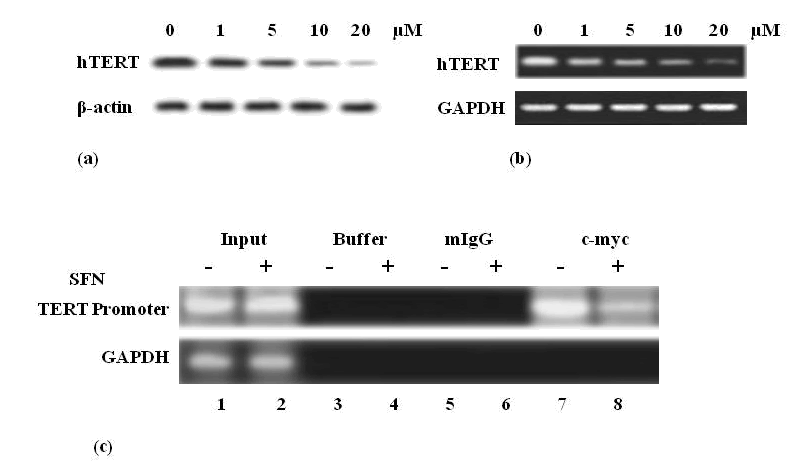
 |
| Figure 3: Sulforaphane inhibits hTERT at the protein and mRNA level in breast cancer cells (a) Expression of hTERT protein in breast cancer cells was determined by western blot analysis after treatment with sulforaphane (0, 1, 5, 10 and 20 μM) for 24 h and was found to be diminished. β-actin was used as loading control. (b) Expression of mRNAs was carried out following RT-PCR technique. RT-PCR was performed using specific primers as mentioned in Table 1. The amplified PCR products were run in a 2% agarose gel and visualized by EtBr staining. mRNAs had been found to be down-regulated after treatment of cells with different concentrations of sulforaphane as mentioned before. GAPDH was used as a house-keeping control gene. (c) ChIP (Chromatin immunoprecipitation) was employed to detect c-myc and hTERT gene promoter complex in response to sulforaphane. Cells were treated with or without sulforaphane (20 μM) for 24 h followed by ChIP with control or specific antibodies. Sulforaphane inhibited hTERT gene by preventing the binding affinity of transcription factors c-myc to its promoter. The DNA hTERT promoter and human GAPDH gene were detected by PCR using specific primers. |